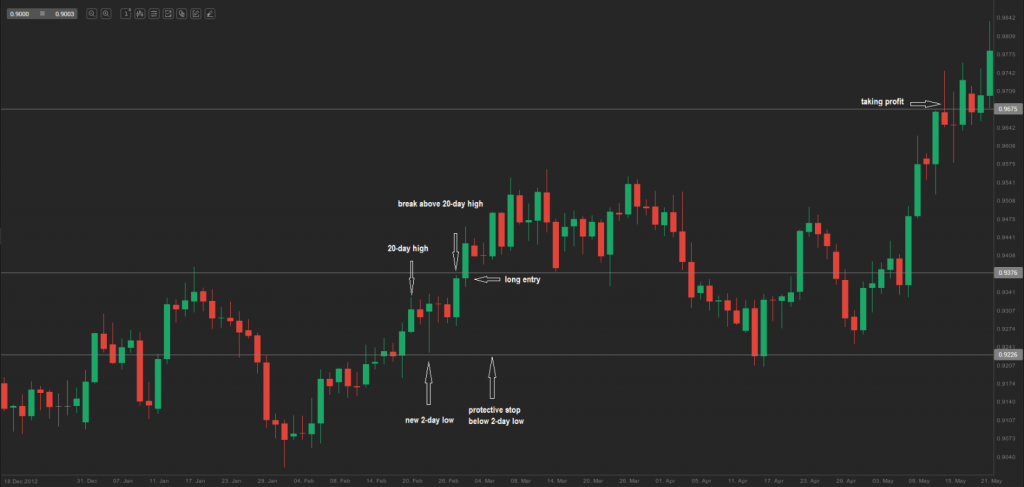How to sift out failed breakouts (swing trading strategy)
This lesson will cover the following
- A quick overview
- Steps a trader needs to follow for this strategy
As we underscored in our Price Action guide, many breakouts tend to fail. This can often be observed in the Foreign Exchange Market, because it is among those financial market segments, more driven by technical trading and there are market participants, who deliberately look to break a certain currency pair out in order to wipe out other, often inexperienced traders from the market. If one is to filter out a potential false breakout, he/she needs to pay close attention to price action in order to detect those breakouts, which have a greater chance to become actual breakouts. Filtering out false breakouts is purposed to give a trader an edge in strongly trending markets where the following scenario occurs – a new high is reached, then the price reverses and takes out the recent low, after which another reversal to a new high follows.
What does a trader need to do?
As with any trading approach, there are certain steps to be followed.
When going long:
the trader needs to search for a currency pair, which is currently registering highs unseen in the past 20 days;
the pair needs to reverse its direction during the upcoming three days and register a two-day low;
the trader will usually go long this currency pair in case it exceeds the 20-day high within the three days, following the two-day low;
a protective stop needs to be placed several pips below the two-day low, identified earlier;
the trader needs to move the stop or to take profit using two times the amount he/she put at risk.
When going short:
the trader needs to search for a currency pair, which is currently registering lows unseen in the past 20 days;
the pair needs to reverse its direction during the upcoming three days and register a two-day high;
the trader will usually go short this currency pair in case it moves below the 20-day low within the three days, following the two-day high;
a protective stop needs to be placed several pips above the two-day high, identified earlier;
the trader needs to move the stop or to take profit using two times the amount he/she put at risk.
Example
Let us examine the daily chart of USD/CHF. The pair registered a new 20-day high on February 21st at 0.9332. Next, we start looking whether it will reverse during the upcoming three days to a two-day low (this actually occurred on February 25th, while the low was at 0.9230). After that we need to look whether the pair will surge to a new 20-day high within the next three days (this actually occurred on February 28th, while the new high was at 0.9372). With this scenario completed, we decide to make a long entry several pips above the new 20-day high, at 0.9376. Next, we decide to place our protective stop several pips below the 2-day low, that we already spotted, at 0.9226. As the market moves in our direction we need to choose from two possibilities – to take profit by two times the amount that we put at risk (a profit of 300 pips), or to trail our stop. We decide to take profit at 0.9675 on May 15th.
